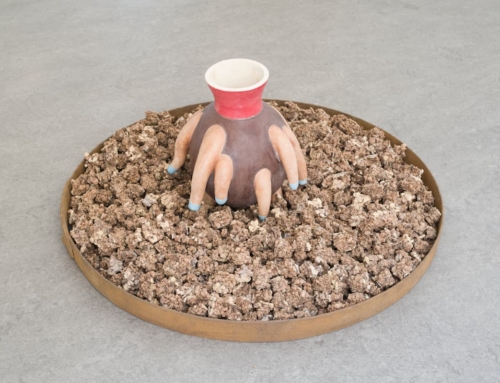Steve Messem (who led our sustainable tourism design camp at Dott 07) writes with news that his next installation – Drop – takes up residence beside Crummock Water in the Lake Distrrict, UK. You’ll find his 7 metre (20 foot) reflective raindrop near Haus Point between Buttermere village and Lorton from 7am tomorrow morning (11 Sept). It will stay there – or so Steve hopes – until the end of Saturday.
This the second amazing droplet I’ve heard about today. Just before Steve’s email arrived, I was reading about “cloud albedo enhancement.” This is the proposal, first made in 1990 by a scientist called John Latham, that controlled global cooling – sufficient to balance global warming resulting from increasing atmospheric CO 2 concentrations – might be achieved by seeding low-level, extensive maritime clouds with seawater particles. The sprayed seawater droplets, Latham proposes, would “act as condensation nuclei, thereby activating new droplets and increasing cloud albedo”. Latham reckons that spraying clouds with seawater on a large scale could help hold the Earth’s temperature constant for many decades.
The scheme is ecologically benign – the only raw materials being wind and sea water – and “if unforeseen adverse effects occurred the system could be immediately switched off, with the forcing returning to normal within a few days”. Latham acknowledges that “questions and concerns would need to be satisfactorily examined before any justification would exist for the operational deployment of the technique” – but I reckon he can speed up that process by going into partnership with Steve Messem. If Latham’s planet-wide aerosol spraying looked as gorgeous as Steve’s Drop, surely none of us would complain.
I’m not being unserious here. I learned about Latham’s proposed feat of “geo-engineering” from a book called Kyoto2: How to Manage the Global Greenhouse by Oliver Tickell. Kyoto2 is basically the blueprint for a new global climate treaty. Based on the latest climate science (summarised clearly in the book) a replacement to the existing Kyoto protocol must achieve a level of atmospheric CO2 below 350 ppm. Otherwise stated: if we are to stabilise greenhouse gas concentrations in the atmosphere at a level that would prevent “dangerous anthropogenic interference in the climate system”, the North will need to reduce its carbon impacts by 98 per cent.
Put baldly like that, most of us will feel like giving up on the whole enterprise. I know I do. The thing is, Kyoto2 describes a plausible path from here, to there in policy terms. What’s missing is the aesthetic-cultural impetus that we’ll also need to make that change happen at a political level.
That’s where projects like Drop come in: 98 per cent less has got to feel like 98 per cent more.

